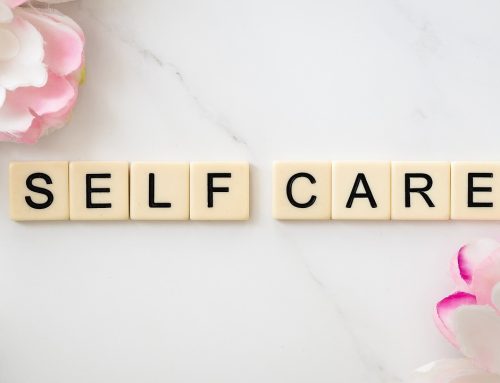
What is the groundhog scared of anyway?
Of course by now you’ve realized that we are talking about more than just a groundhog’s shadow here. The shadow really is anything that might represent unknown situations, new paths in life, or adverse situations that we may be worried about that may be stressful or undesirable like a lost job or medical procedure. Like the winter months, uncertainties and uncontrollable circumstances are unavoidable. These are the shadows in our lives and how we learn to think of these shadows can make all the difference when it comes to maintaining a positive mindset and continuing on with our lives productively and without causing ourselves undue stress. While it is natural to face challenging situations with caution, you must not let the need to be careful and thoughtful lead to fear and anxiety. Instead it is important to focus on what you can control and let logic, mindfulness, and confidence guide your thoughts because by letting go of what you can’t control you give yourself less to worry about that can’t be helped while more energy is spent on matters you can actually impact in a positive way.
Look at the bright side
Being optimistic is all about maintaining focus on the good in our lives while letting go of the bad. This sounds simple but as most of us can agree this can sometimes be very difficult to achieve. With the right tools and a little practice it is totally possible. Your mental state and perception can have a profound effect on how you feel physically and emotionally – affecting things like how much energy you have, how motivated you are to do physical or strenuous tasks, or how much anxiety or grief a negative interaction can create. To combat this, it is helpful to set your expectations in a positive manner by imagining positive outcomes rather than always feeling the worst will happen. Try using positive self-talk to promote good thoughts that bolster your confidence. This includes internal phrases such as “I can do it,” “This will work,” and “Everything will be okay.” These may sound cliché but it is important that we have these positive expressions in our repertoire to act as a counter to the negative thoughts that can creep into our minds in order to give you a way to balance out the nature of thoughts that may be passing through your mind at any given moment.
If anxiety, worry, or fear are a common occurrence you can help break your mind of these habits with practice. Working on being proactively mindful throughout the day can help with this. There are many ways to do this and it is important to figure out what works best for you because there is no “one size fits all” when it comes to positive thinking.
To get you started here are a few ideas. Practice meditation or just some mindful breathing exercises for a temporary respite from your day. Find quiet spots where you can spend a moment or two to unwind and take a few deep breaths during your routine. If you have more time you can schedule in regular meditative or mindfulness practice. While tough at first, meditation becomes easier. For starters you can try a mindful breathing exercise. To do this simply close your eyes and breathe in and out slowly making each inhalation and exhalation last 4-6 seconds. Count the seconds in your head or out loud if it helps and make sure to focus on each breath as it flows in and out. You will slow your heart rate and begin to relax. I recommend doing this for at least a minute but go for as long as you want as the longer you practice this the more at rest you will feel. This is a great way to wind down at night before you go to sleep as well.
This next one is a tip that a counselor once recommended to stop negative thoughts, or all thoughts really, if you are feeling overwhelmed. This may sound odd but what you do is dunk your face or even your entire head in cold water. What this does is provide a shock to your system that acts as a thought interruption and force some reallocation of blood flow. This will help distract your mind from negative thoughts you may be dwelling on and reset your fight or flight response. Again this one may sound uncomfortable, but trust me, when you do it your anxiety will definitely feel less overbearing.
Here at MINES there is an exercise that we ask people to do when we are teaching our clients about optimism and positive thinking. First thing you need to do is find a partner as you will need two or more people. Next, think of a challenging situation or instance that would normally trigger pessimistic thoughts or negative thinking. Share your thoughts, pessimism, and reasons behind them to your partner(s). Your partner(s) then challenge your beliefs or thoughts about the situation. This exercise is designed to show you how different perspectives can be had around the same situation and to challenge the basis of negative thinking. Another benefit of this group dynamic is that you get to share your worries and thoughts, more often than not finding that others share similar feelings. This creates a sense that you are not alone which helps create another source of comfort.
Don’t Run from Your Own Shadow
It’s important to understand that a lot of our negative assumptions are rooted in habit, otherwise it’s easy to place blame on yourself which is counterproductive. And just like any bad habit it will take some determination, mindfulness, and patience to break. Always keep in mind that you are not alone in your efforts. Reach out to friends, family, and co-workers and help each other challenge negative thinking. We hope that some of the tips and techniques that we talked about here will help you stay positive, and if your employer has an EAP like MINES don’t hesitate to call them up and talk to someone that can help you with your goals. Continue to practice challenging your negative thoughts and maintaining an optimistic outlook and we are confident that regardless that the groundhog saw their shadow this year you certainly won’t be the one to hide from 6 more weeks of winter.
To Your Wellbeing,
Nic Mckane
The MINES Team











Leave A Comment